
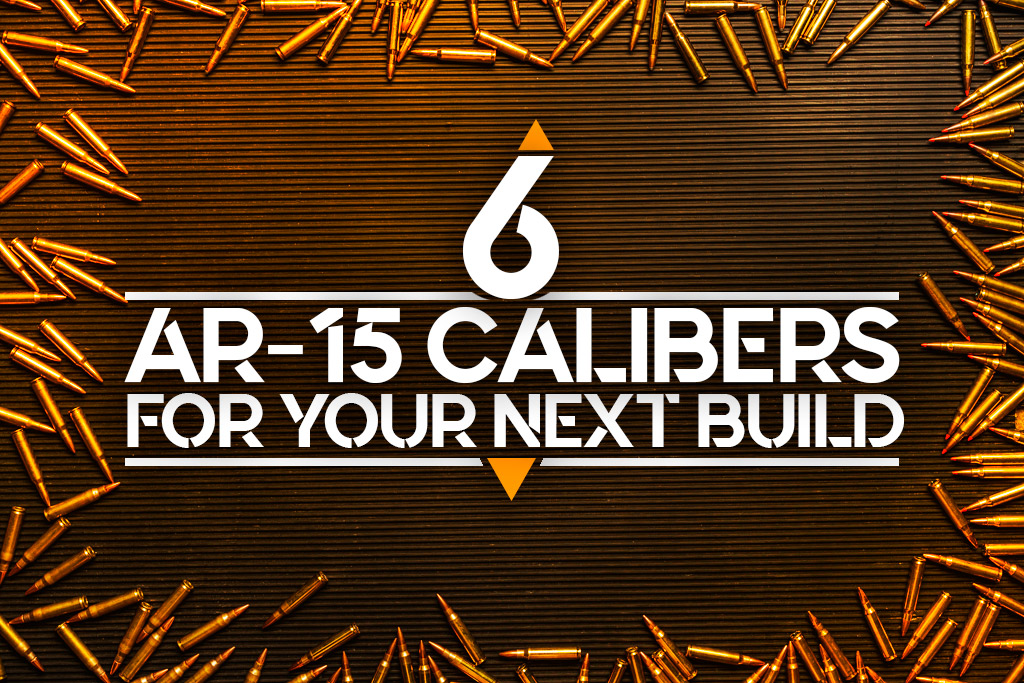
Many subscribe to the adage, “If it ain’t broke, don’t fix it.” You can certainly apply this concept to the AR-15 and its standard 5.56x45mm cartridge. The 5.56 cartridge is well-rounded, and you can use it for various applications. From sports shooting to home defense or taking on small to medium-sized games, the 5.56 is the epitome of versatility. But what about other popular AR-15 Calibers?
Over the years, roughly a dozen different AR-15 cartridges have come into being. Some for reasons of necessity, others for compliance with hunting laws in certain states. As is always the case in the firearms community, several die-hard cults have formed around a few of these cartridges (looking at you, .300 Blackout and 6.5 Grendel).
With all the buzz surrounding 5.56 alternatives, cutting through the noise and determining which cartridges are worth checking out can be challenging. With that in mind, Here’s our list of six AR-15 calibers that deserve the hype. We even threw in a couple you may not know about, but should.
A History of the 5.56 NATO/.223 Rem
The .223 Remington came out in 1957 as an experimental military cartridge designed for the Armalite (AR) 15 rifle.
The .223 and .222 Remington Magnum have nearly identical dimensions, with the only exception being the case length- the .223 case is slightly shorter.
The 5.56x45mm and .223 Remington have identical dimensions. However, 5.56 cartridges can be loaded to higher pressures. That’s why you have probably heard the old adage that you can shoot a .223 round out of a rifle chambered in 5.56, but not vice versa. If you’re unsure if ammunition is unsafe to shoot in your rifle, consult an armorer or licensed gunsmith.
While the cartridge came out in 1957, the U.S. Army did not adopt it until 1964. The Army renamed it using an M and an arbitrary number. Thus, the 5.56 ball cartridge became the M193 and went into the M16 rifle, the Army’s version of the AR-15 design.
The 6 Best AR-15 Calibers
With that settled, the AR-15 calibers that made our list include (velocity/energy averages will vary by barrel length):
| Caliber | Bullet Type | Bullet Weight | Velocity (Muzzle) | Energy (Muzzle) | 100 Yards (Velocity/Energy) | 200 Yards (Velocity/Energy) | 300 Yards (Velocity/Energy) |
|---|---|---|---|---|---|---|---|
| .22 LR | CPRN | 40gr | 1,200 FPS | 128 FT LBS | 970 FPS/84 FT LBS | 770 FPS/53 FT LBS | 550 FPS/27 FT LBS |
| 5.56x45mm | FMJ-BT | 55gr | 3,165 FPS | 1,223 FT LBS | 2,772 FPS/939 FT LBS | 2,412 FPS/711 FT LBS | 2,080 FPS/528 FT LBS |
| .300 Blackout | FMJ | 150gr | 1,900 FPS | 1,202 FT LBS | 1,724 FPS/990 FT LBS | 1,561 FPS/811 FT LBS | 1,411 FPS/663 FT LBS |
| .350 Legend | FMJ | 145gr | 2,350 FPS | 1,778 FT LBS | 1,916 FPS/1,182 FT LBS | 1,539 FPS/763 FT LBS | 1,241 FPS/496 FT LBS |
| 7.62x39mm | FMJ | 124gr | 2,350 FPS | 1,520 FT LBS | 2,078 FPS/1,189 FT LBS | 1,824 FPS/916 FT LBS | 1,595 FPS/701 FT LBS |
| .450 Bushmaster | FTX/Poly | 250gr | 2,220 FPS | 2,686 FT LBS | 1,835 FPS/1,868 FT LBS | 1,515 FPS/1,273 FT LBS | 1,255 FPS/874 FT LBS |
| .224 Valkyrie | OTM | 80.5gr | 2,925 FPS | 1,529 FT LBS | 2,713 FPS/1,316 FT LBS | 2,512 FPS/1,127 FT LBS | 2,318 FPS/961 FT LBS |
| .25-45 Sharps | SP | 87GR | 3,000 FPS | 1,739 FT LBS | 2,677 FPS/1,834 FT LBS | 2,385 FPS/1,099 FT LBS | 2,112 FPS/862 FT LBS |
.223 Rem/5.56x45mm
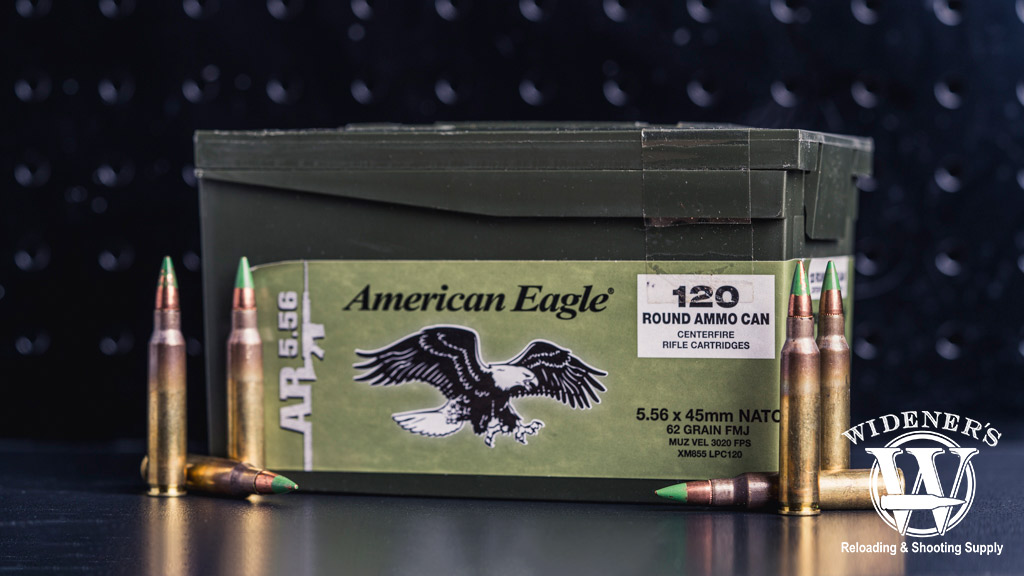
The 5.56x45mm NATO round remains the most popular of all the AR-15 calibers.
How could we omit the OG AR-15 caliber? We simply had to pay respects to the cartridge that started it all. Exceeding supersonic speeds at 500 yards, capable of penetrating steel helmets, and light armor from a 20″ barrel at the same distance. If that’s not enough qualification for a superhero round, then I don’t know what is.
The 5.56’s best trait is its versatility. From hunting white-tail deer to burning off some steam at the range, you can find a 5.56 cartridge for just about anything. It’s reliable and comes in a variety of configurations. Green-tip M855 is a popular 62gr option, featuring a partially steel core, with enhanced ability to punch through hard targets.
In addition to being versatile, the 5.56 is the most popular cartridge out there, period. It’s impossible to know the number of 5.56 cartridges produced by ammo manufacturers each year. As such, there’s a seemingly limitless selection of parts and accessories for AR-15s, including barrels, bolt carrier groups (BCGs), muzzle breaks, and more.
.22LR Rimfire
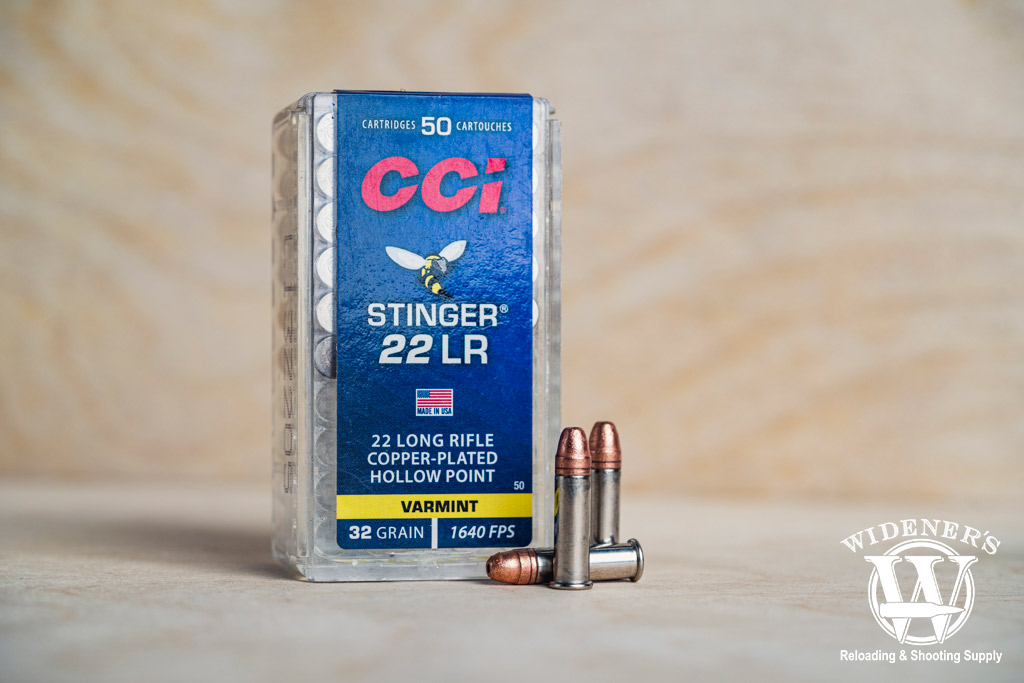
Stings like a bee, CCI’s .22LR stinger rimfire ammunition is small but mighty.
The .22LR is a fun, affordable round primarily for plinking, teaching youth shooters how to run an AR-15, and taking out nuisance animals. This limits the real-world applications for .22LR. It isn’t much of a self-defense round and is not useful for hunting any mid-sized or large game.
That said, AR-15s chambered in .22LR are well-priced. If you don’t want to invest in a standalone rifle, you can purchase a conversion kit for your existing AR-15 for a few hundred bucks. Think of it as an affordable way to train on your rifle at a fraction of the cost of .223 Rem/5.56 ammo.
Speaking of ammo, there are a lot of options to choose from in the rimfire category. While most would lean towards copper-plated options to reduce barrel fouling, you can run lead round-nose ammo in a pinch. That being said, several manufacturers produce .22LR ammo specifically for AR-22-style rifles. Most feature clean burning powder to help keep your gun clean.
.300 Blackout
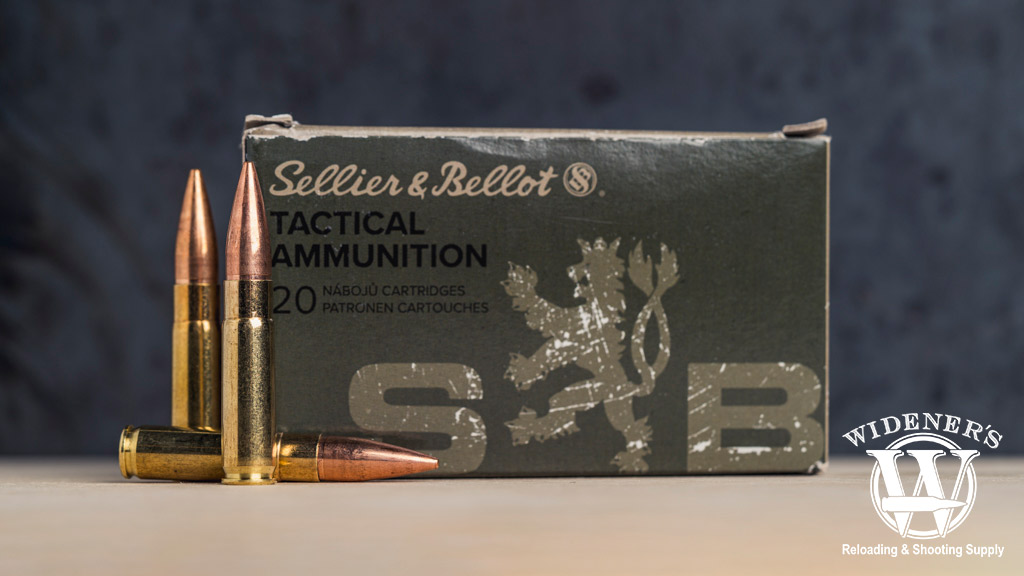
Shhh! .300 BLK ammo is a great option for running suppressed in AR-15 rifles.
We threw some shade (pun fully intended) at the .300 Blackout in the entry to our countdown, but there is plenty to like about this intermediate cartridge. Alternatively known as the .300 AAC, the .300 Blackout is most effective at 300 yards or less. At those distances, it offers a flat trajectory and good ballistics.
If you’re looking for the best round to run suppressed on the AR platform, you can stop scrolling now. 300 Blackout brass can handle heavy subsonic rounds better than any other caliber on the list. It also runs them like a champ, dispelling the myth that .308 bullets can’t be reliably cycled in a shot-barreled rifle.
The .300 Blackout remedies many of the shortcomings of the 7.62x39mm. Unfortunately, the latter produced some reliability issues in some AR-style magazines. The only real downside to the .300 Blackout is that the ammo can be somewhat costly and tough to find.
.350 Legend
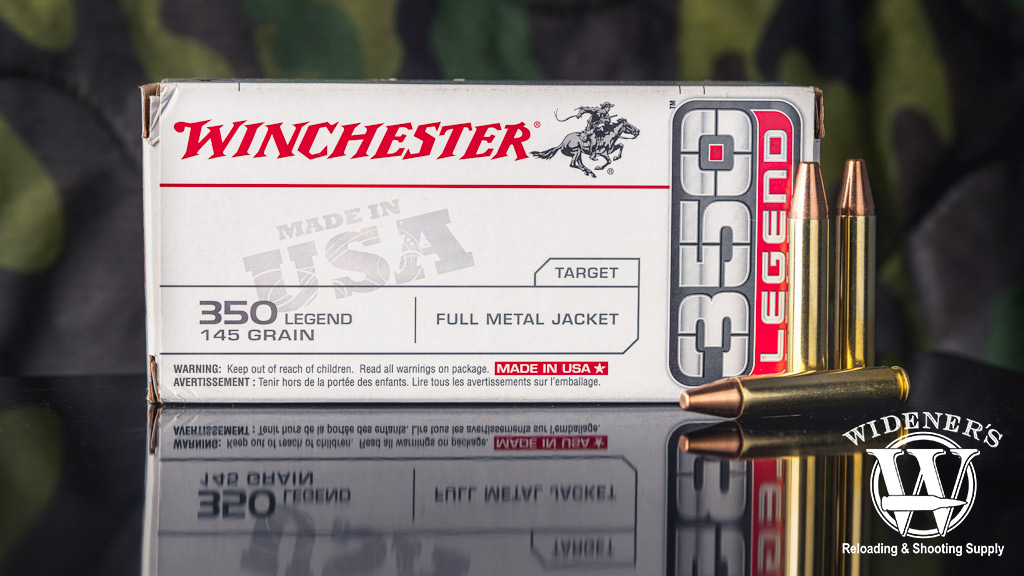
As straight as an arrow, Winchester .350 legend ammo is a great option for hunters.
The .350 Legend is designed for deer hunters who need straight-wall centerfire cartridges. The .350 Legend’s case lacks a taper and contains a 35-caliber projectile. While the performance of the .350 Legend will vary based on the specific cartridge you use, it generally produces more muzzle energy than the .300 Blackout, .223 Remington, and .30-30 Winchester.
That being said, there’s more than meets the eye to this Winchester creation. If you want even more punch, you can find it with OTM 255-grain projectiles. Meaning, it’s also a cartridge designed to be run suppressed. It’s easy to see how this allows it to drift over into the self-defense category as an interesting option.
The only concern about the .350 Legend is no one knows the longevity of the cartridge. It has gained some traction among gun owners, with several manufacturers pumping out barrels and uppers for the caliber in various lengths. Manufacturers will have to keep producing products for this cartridge in hopes the demand continues to grow.
AR-15 Calibers: 7.62x39mm
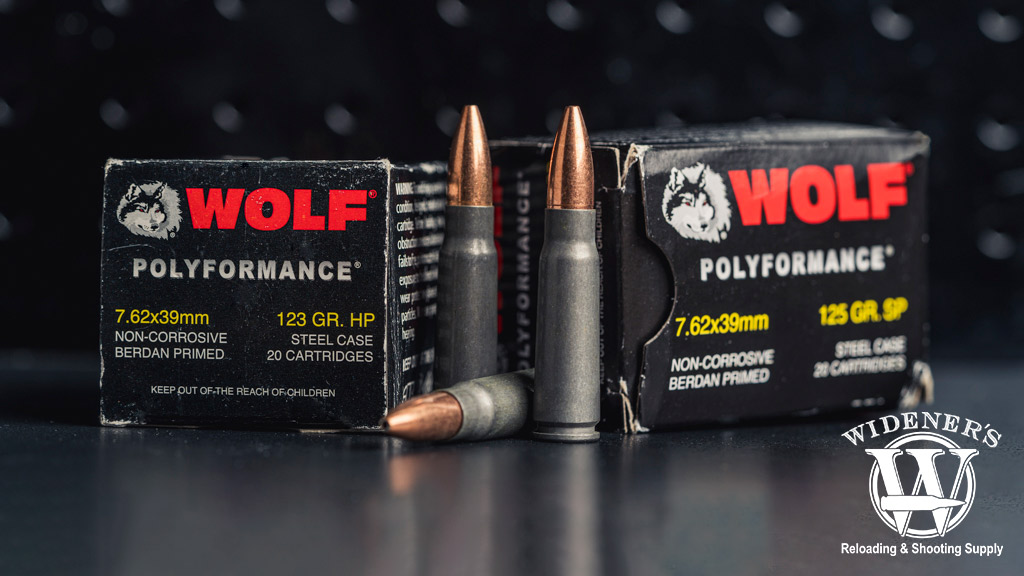
Don’t worry, you don’t need to rub cosmoline on your AR-15 to make it run 7.62x39mm ammo.
The infamous 7.62x39mm round feeds AK-47, SKS, and RPK/RPD weapons systems around the globe. This Soviet design has been around since the 1940s. However, you can also purchase an AR-15 chambered in 7.62x39mm. It’s awesome, and I’ll tell you why.
For starters, you get the accuracy of the AR-15 platform with the .30 caliber power of the 7.62x39mm round. There are tons of surplus 7.62 ammo on the market, and most of it is affordable. The grain weight and energy of the 7.62x39mm are double that of the standard AR-15 caliber. It’s a much more effective round when placed on target for hunting medium-sized game.
Sure, some early AR-15s chambered in 7.62×39 were known for never-ending feeding issues and near-constant malfunctions. These mishaps were a contributor to the development of the .300 Blackout. If you plan on picking one up, be sure to do your homework beforehand.
The good news is that if you are sold on this Soviet round, there are several reputable manufacturers producing guns. If you’re planning on building one, here are a few tips to help you avoid malfunctions. Be sure that your barrel assembly is adequately set up. This means opening up the feed ramps so rounds feed correctly or purchasing a custom lower that can accommodate magazines with a sharper curve.
.450 Bushmaster
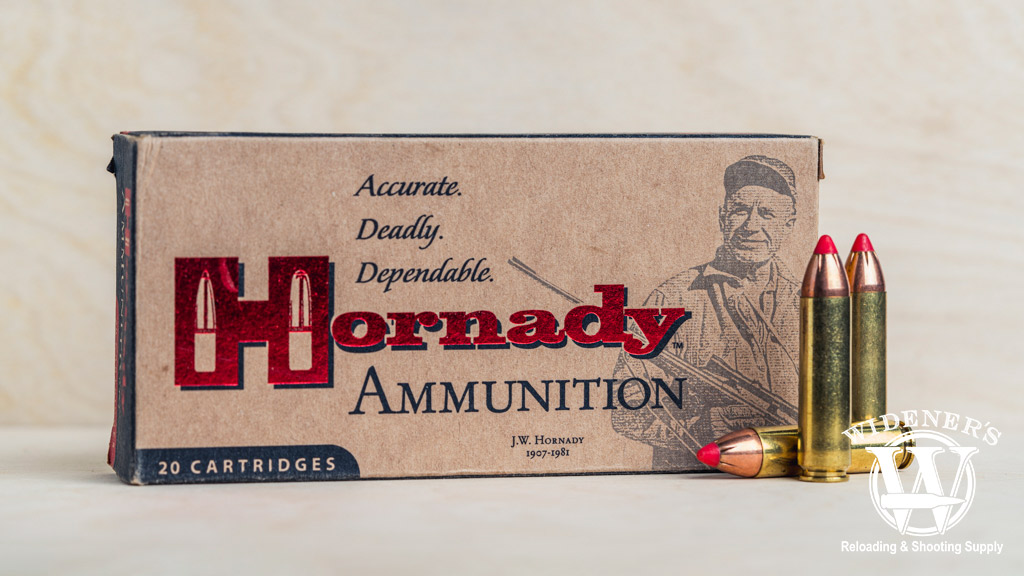
.450 Bushmaster, for when you really, really need to punch a big hole in something.
When it first hit the market, the .450 Bushmaster quickly became the most popular alternative AR-15 cartridge. There were waiting lists and pre-orders in anticipation of the new cartridge. Boxes flew off store shelves for months following the release, then suddenly, no one seemed to care that the .450 Bushmaster existed.
However, when several states altered their hunting laws to allow straight-walled centerfire cartridges, the popularity of the .450 Bushmaster returned. Deer hunters everywhere were clamoring to get their hands on this cartridge, as it can propel a 250-grain projectile at 2,200 FPS. Those familiar with the .45-70 Gov’t can think of the .450 Bushmaster as a modern interpretation of the classic cartridge.
Is it right for you? That depends. Do you like punching big holes in targets at 200 yards and beyond? Do you want to shoot a .45 caliber bullet from an AR-15? If either idea excites you, the obvious answer is yes.
Alternative AR-15 Calibers You Should Check Out

From competition and recreation to self-defense and hunting, the AR-15 platform offers a lot of versatility.
If you are part of the die-hard 6.5 Grendel cult, well sorry, but your cartridge won’t appear in this section either. The 6.5 Grendel is a very capable cartridge that shoots very flat. But, I wanted to go with a few lesser-known cartridges here, one of which seems to edge out the performance of the Grendel. Take a look below.
.224 Valkyrie
The 6.5 Grendel’s older brother, the 6.5 Creedmoor, inspired the 224 Valkyrie’s casing. The standard load for the .224 Valkyrie is a 75-grain Hornady projectile, which boasts a jaw-dropping muzzle velocity of 3,000 FPS. If you want a heavier projectile, you can get a case of Federal Sierra MatchKing cartridges, which feature a 90-grain bullet that leaves the muzzle at 2,700 FPS.
Either way, it’s a screamer that’s worth a second look.
The Valkyrie’s casing features a 0.422” rim diameter, just like the original 6.8 SPC case. But, Federal’s designers modified it to accommodate slender, long bullets to optimize the ballistics coefficients. It’s designed to be used with modern sporting rifles, so compatibility isn’t an issue. The only thing you’ll have to decide is whether or not it’s limited selection of bullet types will fit your ballistic needs.
.25-45 Sharps
The .25-45 Sharps is undoubtedly the most obscure cartridge on our list. But, it is an excellent hunting cartridge that offers slightly more power than the .223 without drastically cranking up recoil. The .25-45 Sharps is a .223 case that has been necked up to accommodate a larger .25 caliber projectile.
If you decide to rock the 87-grain bullet in your weapons system, you can achieve a muzzle velocity of 3,000 FPS. Scale back to a 70-grain projectile, and increase the muzzle velocity to around 3,200 FPS. Remember, this is all with recoil that is on par with your standard AR-15 calibers.
As always, the actual performance of the cartridge will depend on your rifle, bullet, and powder combination. You can achieve more muzzle energy than the famous 7.62x39mm cartridge by purchasing premium ammo (or perfecting your reloading skills).
AR-15 Calibers: Decisions, Decisions

Options are great but don’t get overwhelmed. Make a plan and stick to it, you can always upgrade later.
It’s great to have choices, but being provided with too many options can lead to information overload. With that in mind, we suggest starting from square one. That means deciding what you intend to use your AR for.
If you’ll primarily using it for hunting deer or other game, choose a readily available cartridge compliant with state hunting regulations. On the other hand, if you want a fun economical cartridge to shoot, sticking with the good ol’ 5.56 or one of its similarly-priced counterparts is the right move.
Remember, you can always buy an upper or conversion kit for your AR-15 in the future and augment it to run any of these other calibers. Be sure to budget for any needed accessories to complete your caliber-specific project. Remember to have fun and don’t limit yourself to just one of the many AR-15 calibers.
Ready to move up to the next level? Be sure to check out our best AR-10 calibers blog article.


